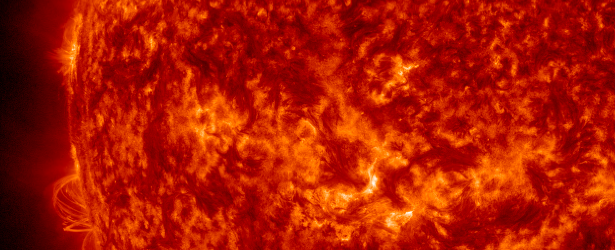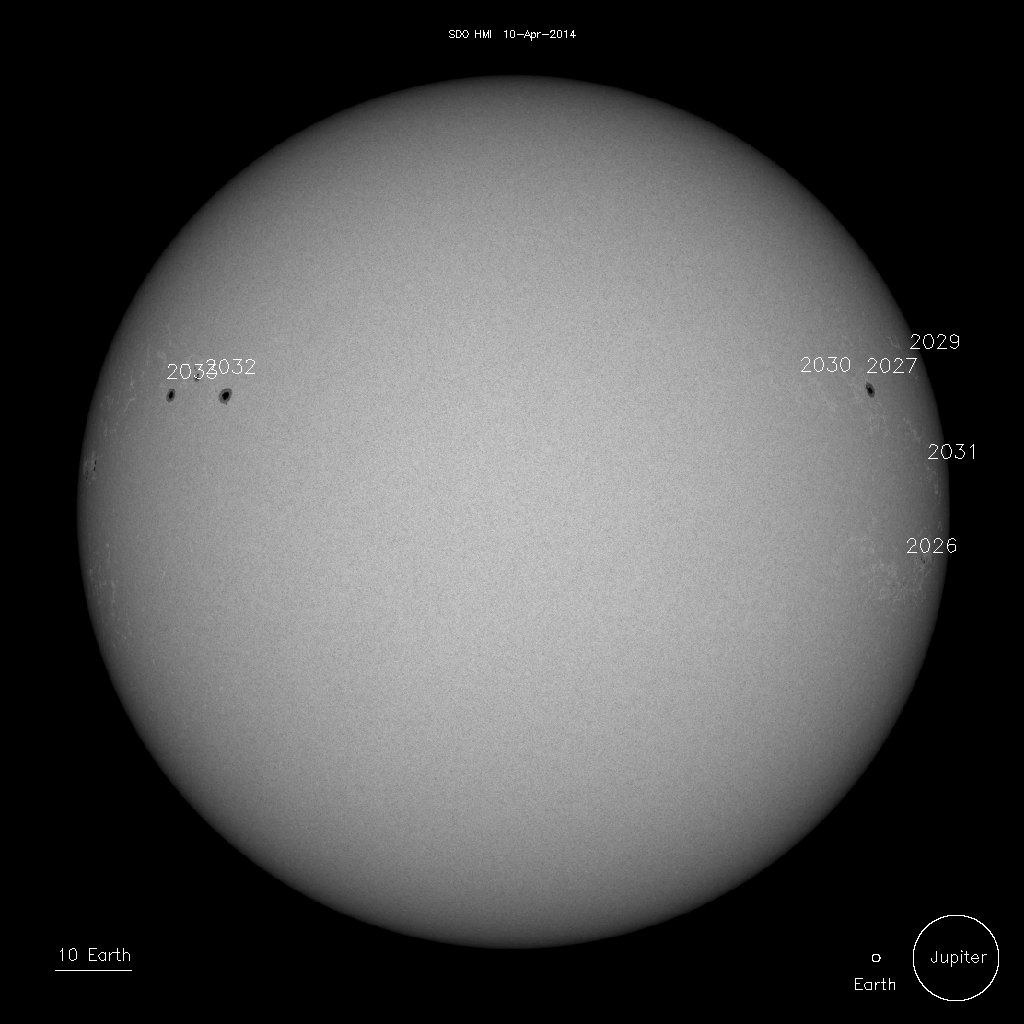Pair of coronal holes, old sunspot regions coming back to Earth side of the Sun

A coronal hole high-speed stream (CH HSS) from a pair of coronal holes straddling the Sun's equator is predicted to become geoeffective beginning around midday on April 12 with an increase in solar wind speed expected along with enhancements in the Interplanetary Magnetic Field.
NOAA SWPC forecasters estimate a 40% chance of polar geomagnetic storms when the stream arrives (IMF).
Solar activity was low in last 24 hours. Several low-level C-class flares occurred, the largest of which was a C4 at 01:52 UTC from a region beyond the southeast limb.
Region 2031 (N03W71, Bxo/beta), which decayed slightly in last 24 houts, produced a C1.2 flare at 00:13 UTC associated with a Type II radio sweep (estimated shock velocity 500 km/s) and a slow, westward-directed Coronal Mass Ejection (CME).
A preliminary CME analysis indicated a speed of around 330 km/s. Further analysis is required to determine if there was a significant Earth-directed component to this CME.

Sunspots on April 10, 2014. Image credit: NASA SDO/HMI
2026 S10W58 23 30 7 CRI 9 B
2027 N13W48 13 130 3 CAO 3 B
2029 N18W65 30 20 1 HRX 1 A
2030 N12W34 359 10 3 BXO 3 B
2031 N03W64 29 30 7 CAO 4 B
2032 N12E54 271 150 8 DSO 4 BG
2033 N12E62 263 60 2 HSX 1 A
Several active regions are about to rotate on the Earth side of the Sun. It is possible that the old region 2010 is coming back which will probably bring the solar activity back to active levels.
Region 2032 (N12E47, Dao/beta-gamma) was stable during last 24 hours and showed a mix of magnetic polarities in its intermediate portion. This region harbors energy for M-class solar flares. Newly-numbered Region 2034 (N04E76, Dro/beta) rotated into view today.
Solar wind forecast
Solar wind conditions are expected to be nominal through about midday on April 12. A coronal hole high-speed stream is predicted to become geoeffective beginning around midday on April 12 with an increase in solar wind speed expected along with enhancements in the IMF. The latest WSA/Enlil ambient model run indicates peak wind speed in the 500 km/s to 550 km/s range with this CH HSS.
Geomatic field forecast
Geomagnetic field is expected to be quiet during April 10 and 11, with a chance for unsettled levels on April 10. Field activity is expected to increase to quiet to active levels on April 12 anticipating the onset of a CH HSS.
Featured image: NASA SDO/AIA 304

Commenting rules and guidelines
We value the thoughts and opinions of our readers and welcome healthy discussions on our website. In order to maintain a respectful and positive community, we ask that all commenters follow these rules.